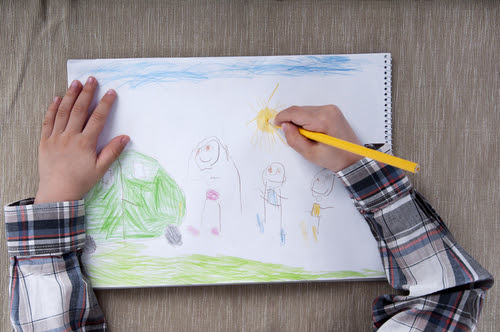Non-Covid Reasons Your Child (and You) May Be Dreading a Return to School
School focus challenging? Or is it really a fine motor challenge?
Beyond all the environmental and logistical challenges related to returning to school, some more fundamental challenges can also add to your child’s frustrations — focus and fine motor skills.
Does your child seem lazy or resistant to doing their work?
There is often more to consider with our children’s behavior than merely motivation. At Kinetic Konnections, we meet family after family struggling with challenging school behaviors. Our assessment process often surfaces subtle, yet significant, glitches in fine motor skills. This is frequently an underlying cause for the lack of focus or avoidance of work.
When the function of the hands and arms isn’t well integrated most visual-motor tasks become slower, less accurate or more cumbersome. The inefficiency takes its toll and kids become so frustrated without realizing why they struggle. They can’t articulate why they may need help, as this is the only ‘normal’ they have known.
See below for the top five unsuspecting reasons we find fine motor skills may be causing challenges.
Yes, these fine motor skills can change. Children are amazed at how their coordination and strength change instantaneously. Parents are amazed at how the writing, eating, and avoidance change. The gentle rocking movements of the Bridging® Technique quickly create these long-lasting changes.
A more complete discussion of child development and motor skills is linked to below.
Our goal at Kinetic Konnections is to keep your body optimally organized to behave, focus and be active for the things you enjoy in life.
Our wishes to all for a smooth transition to the new school year!
Five unsuspecting reasons why your child’s fine motor skills might not work well
 The following are of some of the earliest causes we find that negatively impact motor skill development. (But they can be changed!)
The following are of some of the earliest causes we find that negatively impact motor skill development. (But they can be changed!)
- Prenatal positioning impacting the complete development of movements between an arm and torso.
- Birth trauma when baby’s arm is commonly used as a handle to pull baby out via C-section (approx. 32% of all births in US).
- PICU, NICU Monitoring devices and lines attached to neonates and infants. The monitoring is attached and stabilized, preventing movement of the arm.
- Invasive medical procedures prior to five months old. The IVs, respiratory support, and incision recovery all interfere with essential tummy time, which develops shoulder, core, and neck strength.
- Injuries to hands and arms such as sprains and fractures.
When a reach is more than a reach
 As parents, we aren’t fully attuned to how each discrete developmental step of our child’s movement is essential to the future of other domains of skills.
As parents, we aren’t fully attuned to how each discrete developmental step of our child’s movement is essential to the future of other domains of skills.
For instance, the act of reaching involves and refines developing visual skills later used for reading books and social settings.
Read the full Sept 2019 BLOG post.

